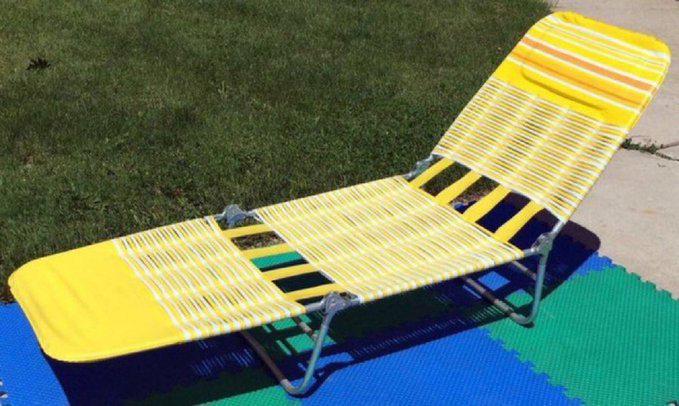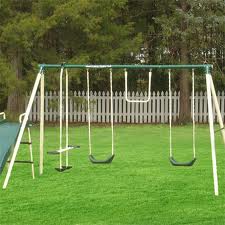 Few 1980s toys hold a reputation as wild and controversial as lawn darts. Known officially as “Jarts,” these backyard game pieces weren’t your average playthings. They were heavy, sharp-tipped metal projectiles disguised as family fun. Sold alongside croquet sets and badminton rackets, they were marketed as wholesome outdoor entertainment for the whole family—except they had the curious distinction of being capable of piercing skulls. For a generation of kids raised on free-range summers and very little adult supervision, lawn darts weren’t just a game—they were a gamble.
Few 1980s toys hold a reputation as wild and controversial as lawn darts. Known officially as “Jarts,” these backyard game pieces weren’t your average playthings. They were heavy, sharp-tipped metal projectiles disguised as family fun. Sold alongside croquet sets and badminton rackets, they were marketed as wholesome outdoor entertainment for the whole family—except they had the curious distinction of being capable of piercing skulls. For a generation of kids raised on free-range summers and very little adult supervision, lawn darts weren’t just a game—they were a gamble.
The concept behind lawn darts was deceptively simple. Players stood at one end of a yard and tossed long, dart-like missiles toward a plastic ring on the ground. Points were scored for landing inside the target. It was like horseshoes, only with sharpened steel missiles instead of U-shaped irons. The darts themselves were about a foot long, with heavy, weighted tips and fins on the back to help them soar. When thrown high into the air in a classic arc, they came down with force—and that force was more than enough to turn fun into catastrophe.
Kids in the ’80s didn’t always use toys the way they were intended, and that applied in spades to lawn darts. It wasn’t uncommon for games to devolve into chaos: throwing them as high as possible and seeing who could dodge them, aiming at arbitrary targets, or just flinging them in the general direction of whatever seemed fun. Warnings were printed on the box, sure, but the sheer presence of lawn darts in toy aisles next to Wiffle balls and Frisbees gave them an unearned sense of safety.
Parents gave their usual cautions—“Be careful,” “Don’t throw those at each other,” “Watch your brother”—but that was about it. In the summertime, kids were often left to their own devices. That was part of the era. Helmets were optional, car seats were rudimentary, and safety concerns were usually learned by experience. The trouble was, with lawn darts, one mistake could lead to a trip to the emergency room—or worse.
By the mid-1980s, injuries caused by lawn darts were being reported with alarming frequency. Emergency rooms saw a growing number of puncture wounds, head injuries, and facial trauma directly caused by errant throws. Tragically, the most high-profile incident came in 1987, when a seven-year-old girl in California died after a lawn dart penetrated her skull. Her father, David Snow, channeled his grief into advocacy. Determined to keep other families from experiencing similar heartbreak, he launched a campaign to have the product banned outright.
His fight gained traction quickly. The Consumer Product Safety Commission (CPSC) began investigating and soon discovered that, despite warnings and packaging disclaimers, children were consistently getting hurt. Manufacturers claimed the product was for adults only, but the facts told a different story: lawn darts were being used by kids because they were sold alongside toys and marketed as part of the family recreation experience.
Snow’s persistence, combined with rising public concern and mounting injury data, forced action. In 1988, the CPSC issued a total ban on the sale of lawn darts with metal tips in the United States. Stores pulled them from shelves. Production stopped. A toy that had once been a summer staple was now a cautionary tale.
But like any infamous piece of nostalgia, lawn darts never completely disappeared. Old sets still surface at garage sales and in the forgotten corners of basements. Some people collect them, proudly displaying them as symbols of a more “rugged” childhood. Others recall using them with a mix of fondness and disbelief, amazed that anyone ever thought it was a good idea to give children sharpened projectiles and let them sort it out in the yard.
Today, softer, safer versions of the game exist. These modern lawn darts are made of lightweight plastic with rounded tips, posing no real danger beyond a stubbed toe. They provide the same basic gameplay but without the threat of puncture wounds. For families still interested in tossing things into a ring on the lawn, the spirit of the game lives on—just without the trip to urgent care.
The legacy of the original lawn darts is hard to separate from the broader culture of the time. The 1980s were a strange transitional period in terms of parenting and safety awareness. The consumer product regulations we take for granted today were still being formed. Many parents assumed that if something was sold in a store, it had to be safe. And the general parenting philosophy leaned heavily on common sense and good luck. The result was a generation that grew up with a remarkable sense of freedom—and, at times, real danger.
Lawn darts are now often lumped into lists of “toys that would never be allowed today,” alongside other notorious examples like clackers, metal-tipped yo-yos, and chemistry sets with actual radioactive materials. But few of those had the lethal potential of a steel dart thrown high into the air by an eight-year-old. The difference with lawn darts is that they weren’t just risky—they were predictably dangerous. The injuries weren’t flukes. They were baked into the design.
Still, ask any millennial who grew up in that era, and they’ll likely have a story. Maybe it’s about a cousin who took one in the foot. Maybe it’s about a game that turned into an impromptu javelin contest. Maybe it’s just a memory of that heavy thunk as a dart stuck into the dirt two feet from someone’s leg. Whatever the details, lawn darts left an impression—literally and figuratively.
They also left behind a cautionary reminder of how much trust parents once placed in kids, products, and fate. It’s easy to mock that era now, with its sharp-edged toys and unbuckled car rides. But in between the danger was a kind of unfiltered childhood freedom. That doesn’t mean it was better—just different. Lawn darts didn’t define the ’80s, but they symbolize the line between what we survived and what we learned to do better.
So while it’s tempting to laugh at how absurd it all seems now, the truth is more complicated. Lawn darts were fun—until they weren’t. They were iconic—until they became tragic. And they were everywhere—until they were banned. If nothing else, they serve as a reminder that not all nostalgia is harmless. Sometimes, the games we remember from childhood come with sharp edges.


